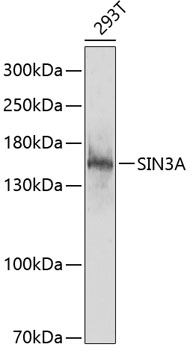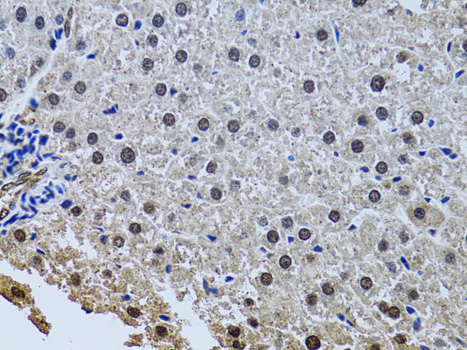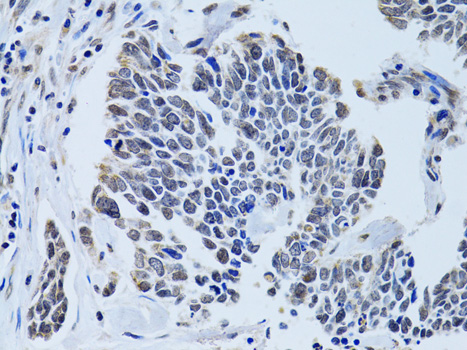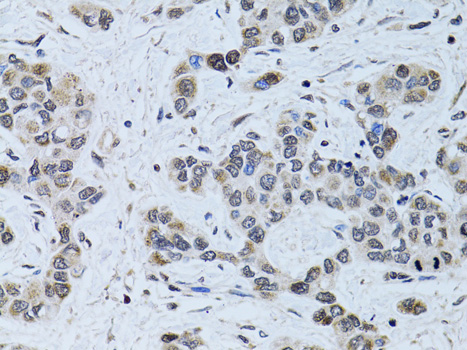-
Product Name
SIN3A Polyclonal Antibody
- Documents
-
Description
Polyclonal antibody to SIN3A
-
Tested applications
WB, IHC
-
Species reactivity
Human, Rat
-
Alternative names
SIN3A antibody; WITKOS antibody; paired amphipathic helix protein Sin3a antibody
-
Isotype
Rabbit IgG
-
Preparation
Antigen: Recombinant fusion protein containing a sequence corresponding to amino acids 1-120 of human SIN3A (NP_056292.1).
-
Clonality
Polyclonal
-
Formulation
PBS with 0.02% sodium azide, 50% glycerol, pH7.3.
-
Storage instructions
Store at -20℃. Avoid freeze / thaw cycles.
-
Applications
WB 1:500 - 1:2000
IHC 1:50 - 1:200 -
Validations

Western blot - SIN3A Polyclonal Antibody
Western blot analysis of extracts of 293T cells, using SIN3A antibody at 1:1000 dilution.Secondary antibody: HRP Goat Anti-Rabbit IgG (H+L) at 1:10000 dilution.Lysates/proteins: 25ug per lane.Blocking buffer: 3% nonfat dry milk in TBST.

Immunohistochemistry - SIN3A Polyclonal Antibody
Immunohistochemistry of paraffin-embedded rat liver using SIN3A antibody at dilution of 1:100 (40x lens).

Immunohistochemistry - SIN3A Polyclonal Antibody
Immunohistochemistry of paraffin-embedded human lung cancer using SIN3A antibody at dilution of 1:100 (40x lens).

Immunohistochemistry - SIN3A Polyclonal Antibody
Immunohistochemistry of paraffin-embedded human liver cancer using SIN3A antibody at dilution of 1:100 (40x lens).
-
Background
Acts as a transcriptional repressor. Corepressor for REST. Interacts with MXI1 to repress MYC responsive genes and antagonize MYC oncogenic activities. Also interacts with MXD1-MAX heterodimers to repress transcription by tethering SIN3A to DNA. Acts cooperatively with OGT to repress transcription in parallel with histone deacetylation. Involved in he control of the circadian rhythms. Required for the transcriptional repression of circadian target genes, such as PER1, mediated by the large PER complex through histone deacetylation. Cooperates with FOXK1 to regulate cell cycle progression probably by repressing cell cycle inhibitor genes expression (By similarity).
Related Products / Services
Please note: All products are "FOR RESEARCH USE ONLY AND ARE NOT INTENDED FOR DIAGNOSTIC OR THERAPEUTIC USE"
